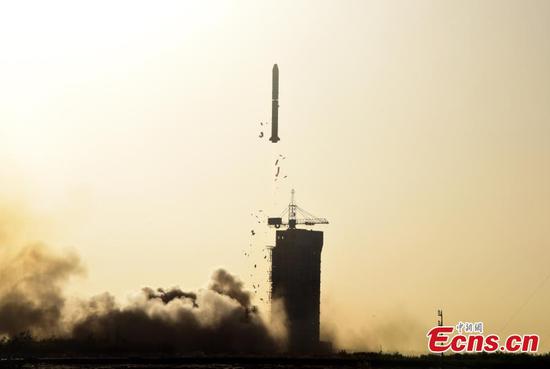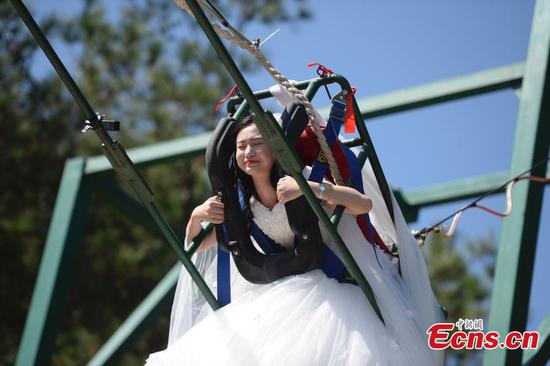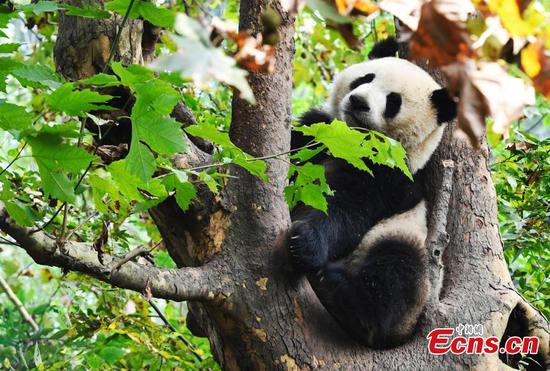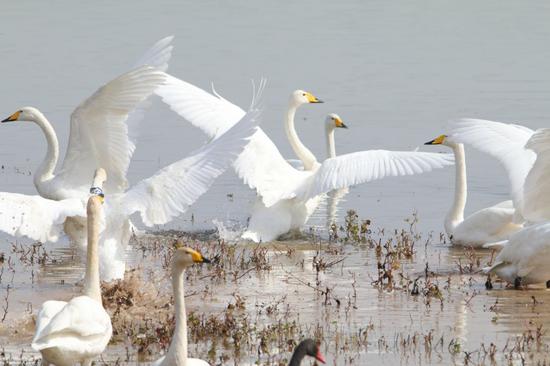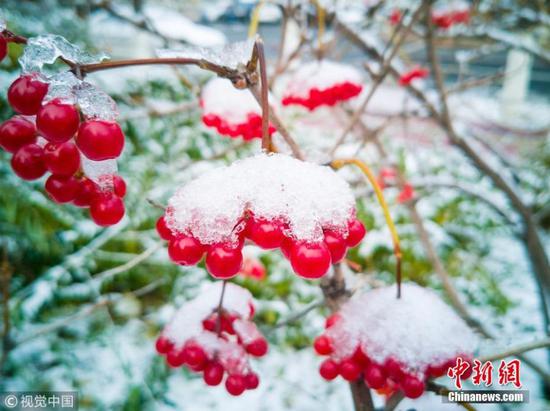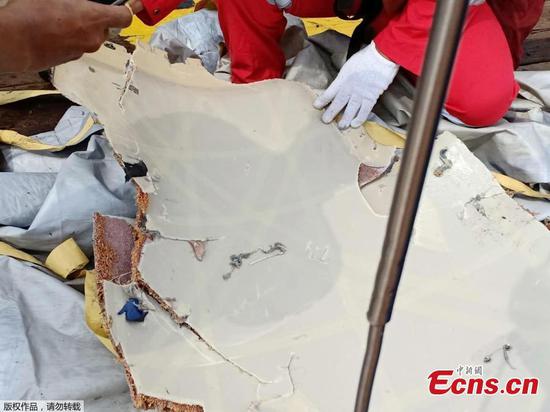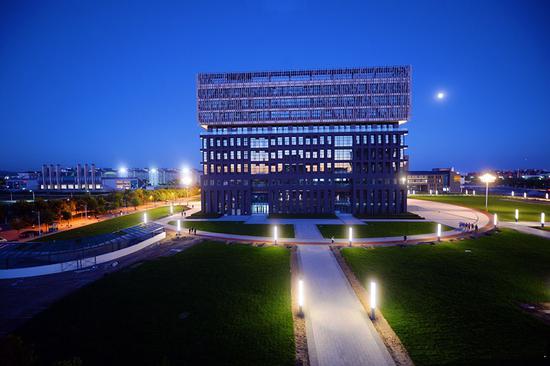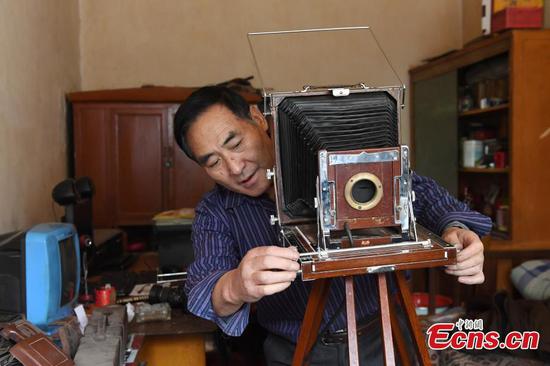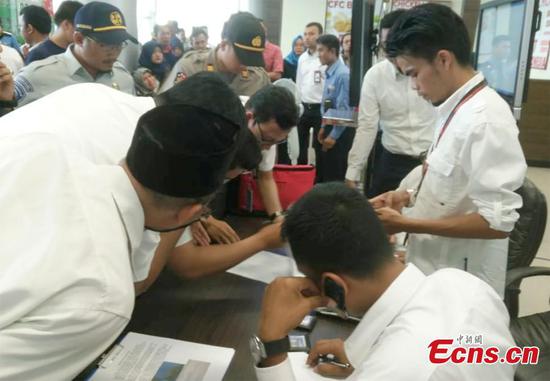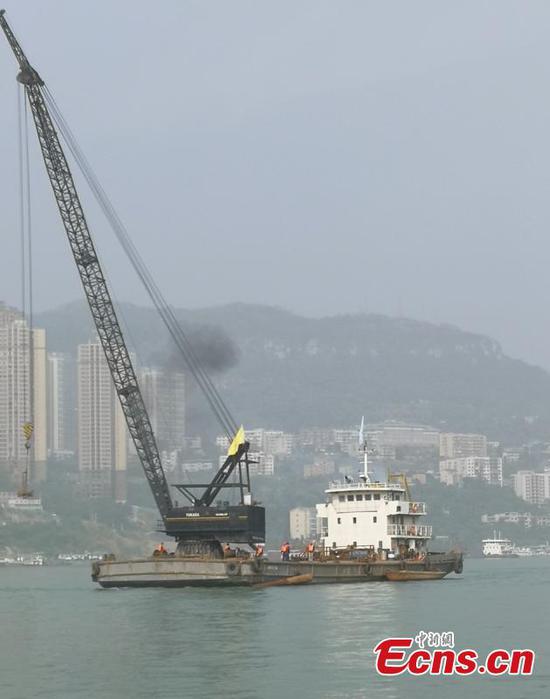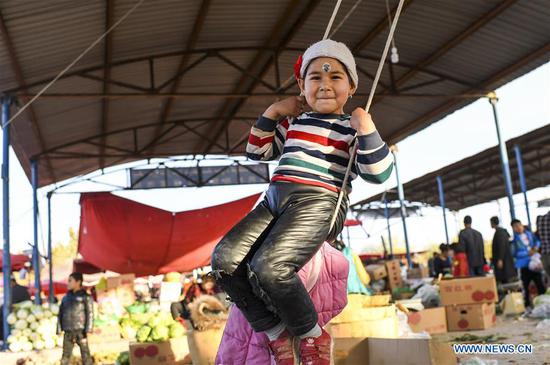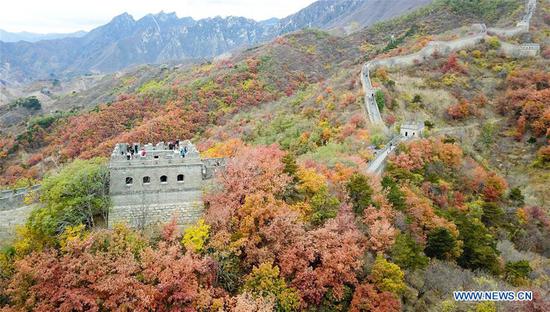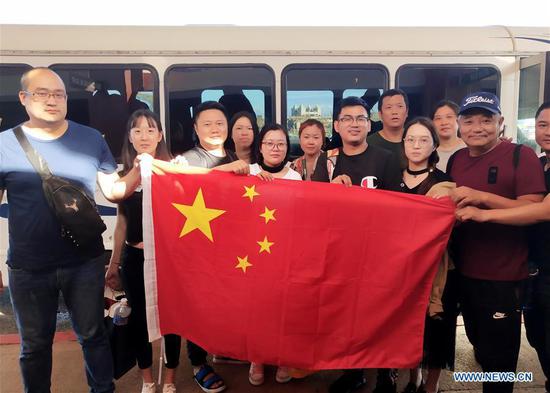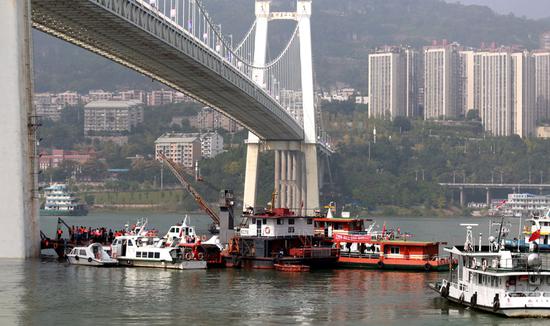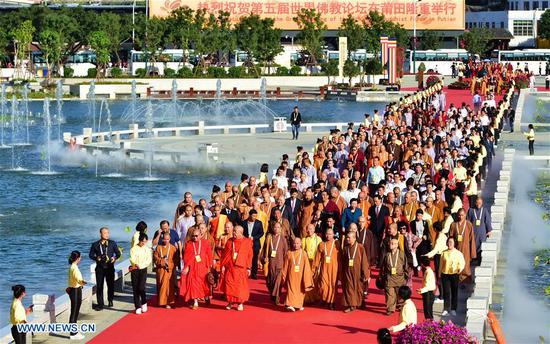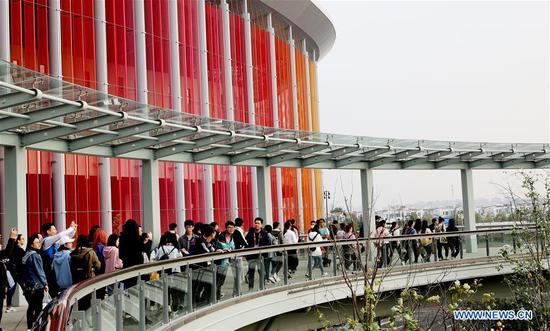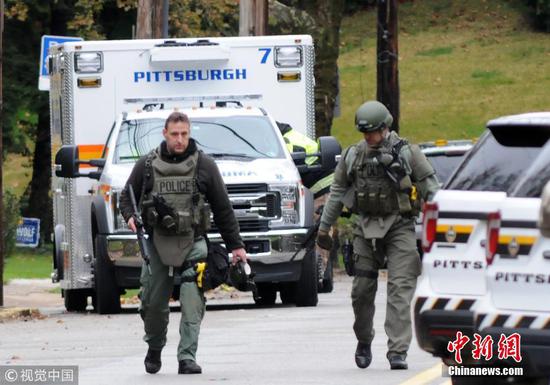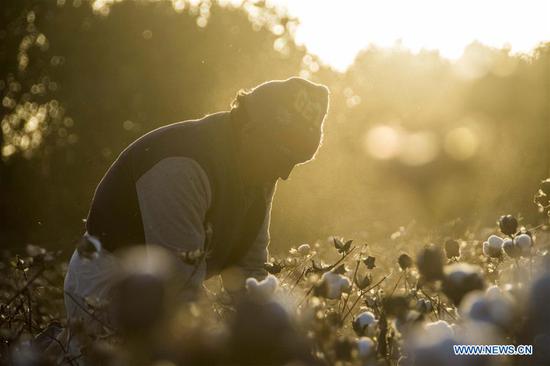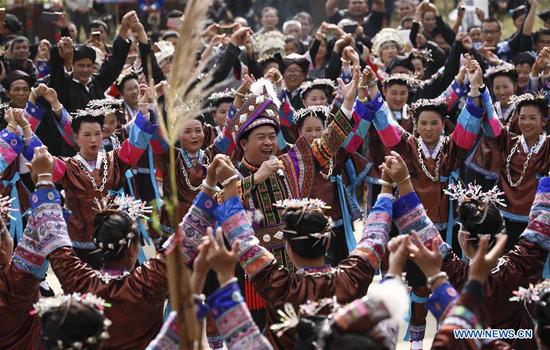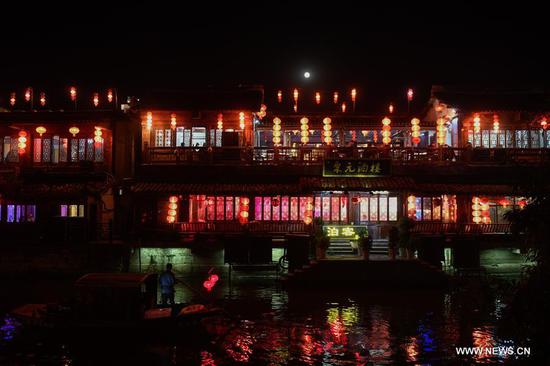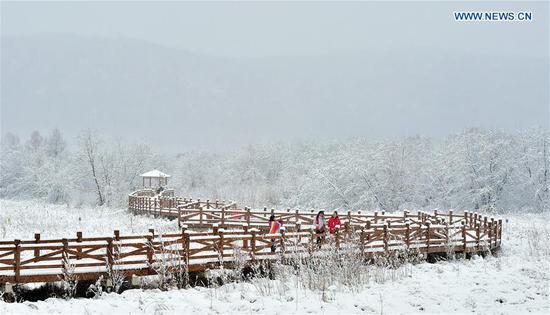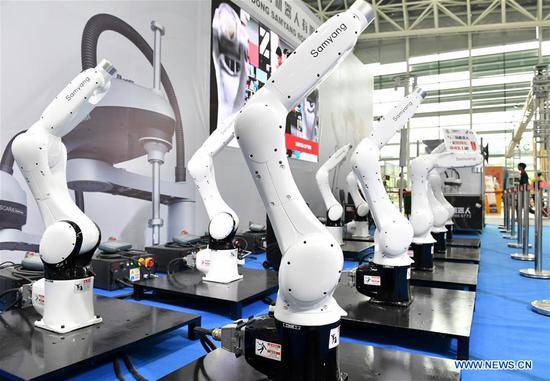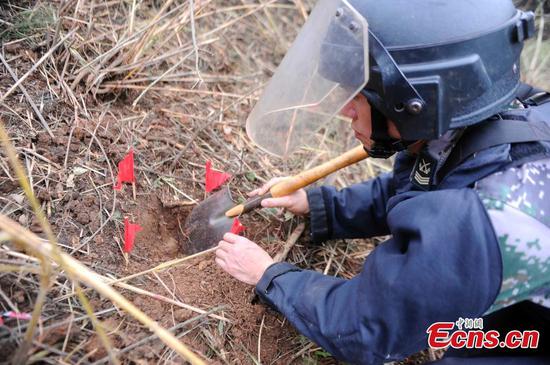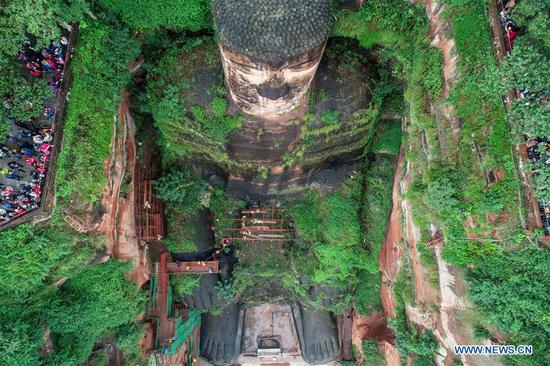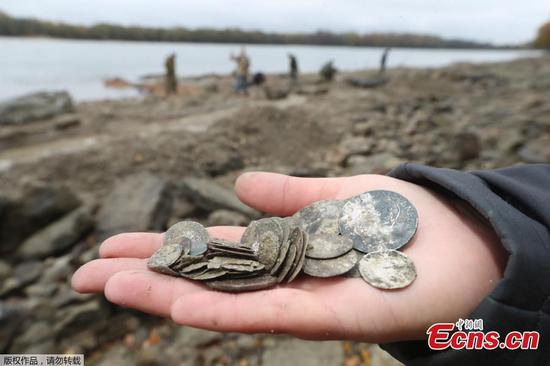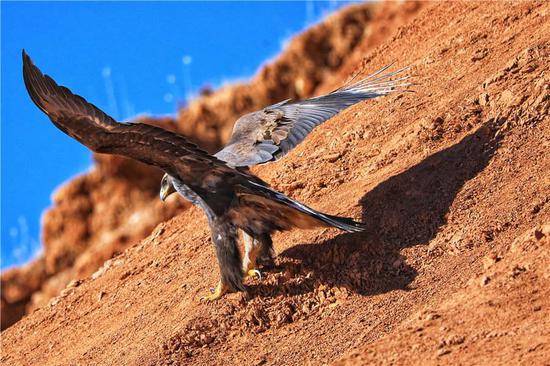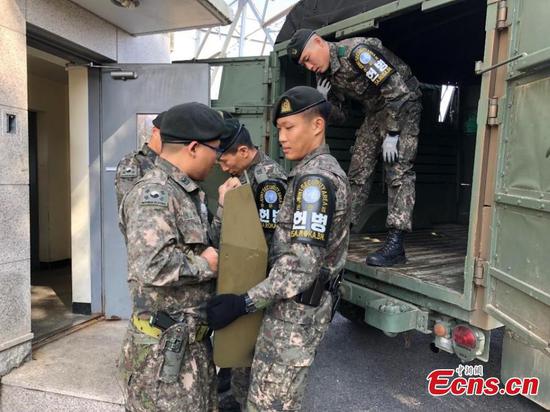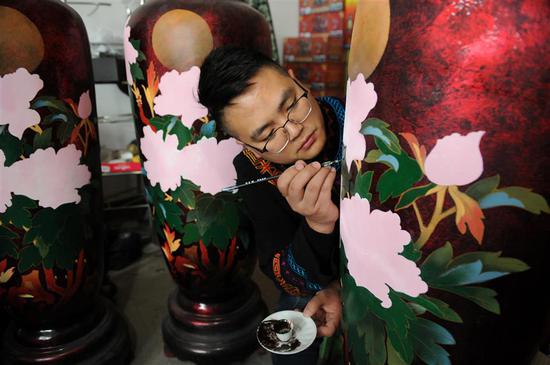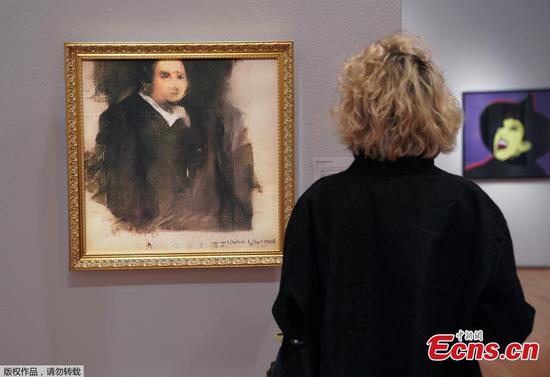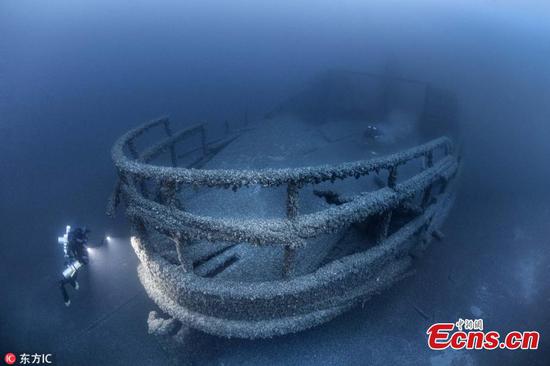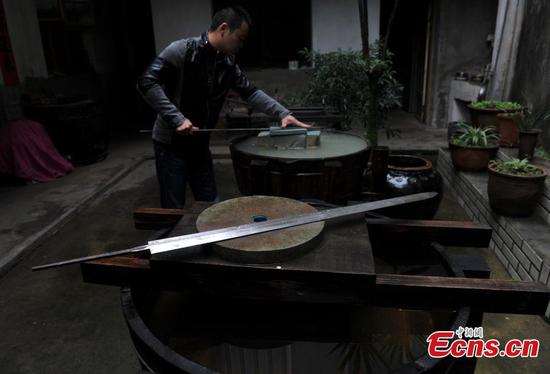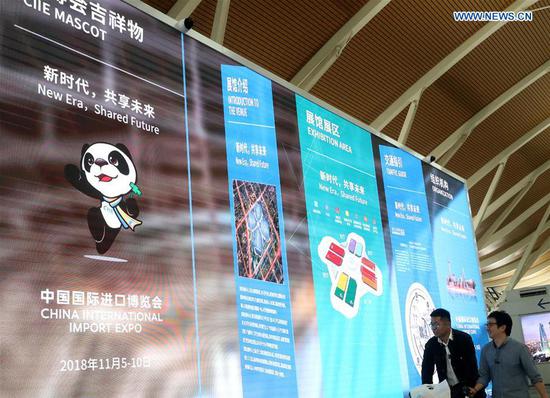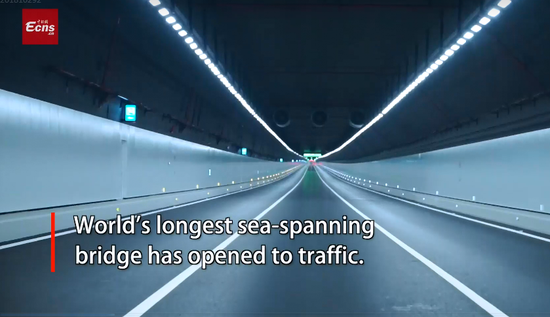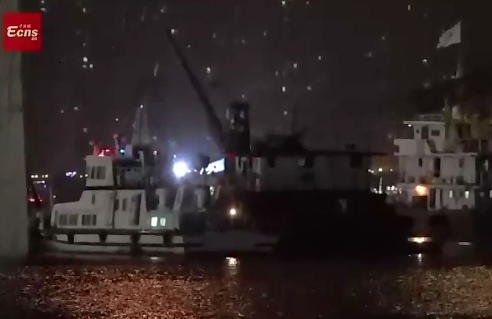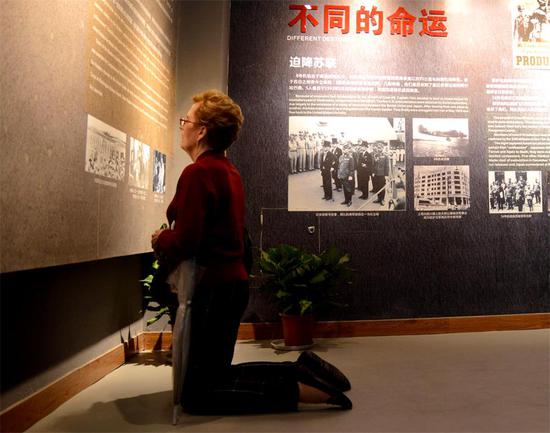
Susann Ozuk from the United States kneels before a photo of the Doolittle Raid, the first US reprisal attack on Japanese soil during World War II, at the Memorial Hall to the Doolittle Raid in Quzhou, Zhejiang province, on Thursday. After bombing Tokyo, the US crews, including her father, crash landed in China and were rescued by locals. (Photo/China Daily)
Susann Ozuk knelt down and peered at a historical photo reprinted on a display board. "See! That's my father back then," she called out, unable to restrain her excitement.
"Thank you for your efforts in helping me better understand the story of my father," she said, hugging history researcher Zheng Weiyong at the Memorial Hall to the Doolittle Raid in Quzhou, Zhejiang province, on Thursday.
The memorial hall was launched on Thursday in remembrance of the heroic raid and the selflessness of Quzhou villagers who helped rescue United States pilots.
Susann, from the U.S., is the daughter of navigator Charles Ozuk, who participated in the raid 76 years ago.
The attack, also known as the Tokyo Raid, refers to the aerial operation by the U.S. over Tokyo on April 18, 1942, the first such activity to strike the Japanese home islands.
It demonstrated that the Japanese mainland was vulnerable to U.S. air attack, and served as retaliation for the Japanese attack on Pearl Harbor. It also provided an important boost to the morale of the allied nations during the conflict.
The raid was planned and led by U.S. Lieutenant Colonel James Doolittle, who led a team of 16 B-25B medium-range bombers without fighter escort.
However, after the mission was completed, most of the planes either performed forced landings or crashed in China's Zhejiang, Jiangxi, Fujian and Anhui provinces as they ran out of fuel before trying to reach the recovery airfield in Quzhou.
Chinese selflessly helped the U.S. airmen, leaving behind many moving stories worth retelling.
The 75 U.S. flyers who landed in China were helped by locals who led them past Japanese lines.
Sixty-four of the crew members reached safety, eight were captured by the Japanese army and three died in the forced landings.
"In Zhejiang, flight crew units No 3 and No 5 parachuted and safely landed in Jiangshan county, Quzhou. Local villagers rescued them from the mountains and sent them to safety," Zheng said.
Zheng first heard about the story in 2010 and eventually got in touch with Susann, who came to Quzhou last week with another 23 members of Children of Doolittle Raiders in the U.S., a group of family members of the raiders dedicated to preserving the history of the operation and the raiders.
Aside from 200 original historical items related to the raid, the hall also displays historical documents and files donated by civilians in Quzhou.
Jeff Thatcher, president of CDR, said the memorial hall serves as a testimony of their fathers and a symbol of cooperation and friendship between the U.S. and China.
"I sincerely hope that more will understand and remember this part of history," he said.









